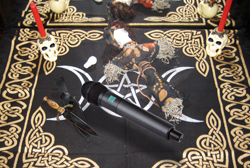
5. Going digital solves all challenges. Since when? Yes, it’s great to see the innovation with digital that’s been ongoing the past few years.
But what problems does digital really solve? Probably the biggest is sound quality. As good as analog companders have become, they still introduce artifacts into the audio. We can argue all day long about which systems sound better, but this is largely a matter of personal taste based on what we’re used to.
That said, digital audio in wireless mics really does make a difference. Without the compander along with pre- and de-emphasis in the audio path, there is far less distortion in all its forms.
But what digital does not do is change the laws of physics. We still need to carve out some spectrum like we always have. However, there are ways to pack the data streams and use data compression, so we’re seeing potentially higher channel counts now with digital than with analog.
Just remember the engineering triangle. In this context, there is long operating range, good audio quality, and high channel count. Pick any two, because you can’t have all three in one system.
6. VHF systems have greater operating range than UHF models. Sure, there probably was a time (maybe in the 1990s) when this was true, because UHF systems were just being implemented. But today, practical antenna dimensions restrict the kind of range performance that can be attained with VHF.
Particularly with the transmitter, antenna efficiency matters. And antenna efficiency is based on size relative to the size of the waves being transmitted. This is why VHF antennas are rather large. A 1/4-wave antenna in the UHF band measures 3 to 4 inches – a practical size, and they’re quite efficient. Because of this, today’s UHF systems generally far outperform VHF systems.
7. There is “voodoo” or “black magic” associated with getting wireless mic systems to work properly. I hear this more often than anything else. Frankly, it comes from those who have not learned the fundamentals, continuing to stab in the dark and roll the dice.
But mastering the basics of wireless isn’t any more difficult than loudspeaker coverage, power requirements, gain staging or any of the other nuts-and-bolts stuff we must learn if we’re to consider ourselves professionals. Further, modern software makes much of this quite easy, with the caveat that it’s only as good as the user.
Flip It Around
To counterbalance these misconceptions, I’ve put together a set of best wireless practices. This list was developed over many years, and is the foundation of what I teach when doing training on proper setup and use of wireless systems.
1. Develop and deploy a consistent procedure, based on solid science and experience. This requires learning the fundamentals, understanding equipment inside and out, followed by gaining experience putting things into practice.
There is no one “right” procedure; it can be developed to suit your preferences. However, it should always start with receiver antenna system positioning, then receivers (frequency scanning and coordination), followed by transmitter gain staging. Get these things right, and you’re well on your way.
